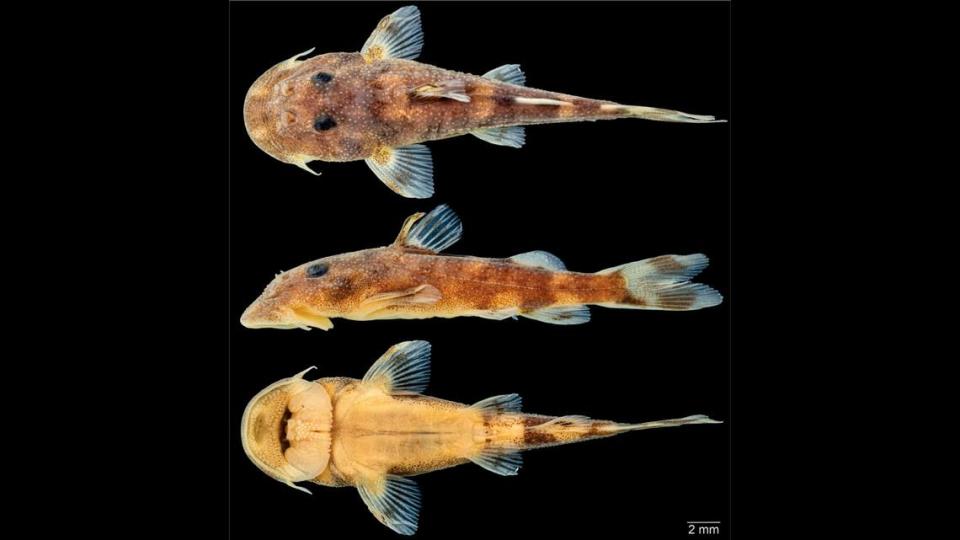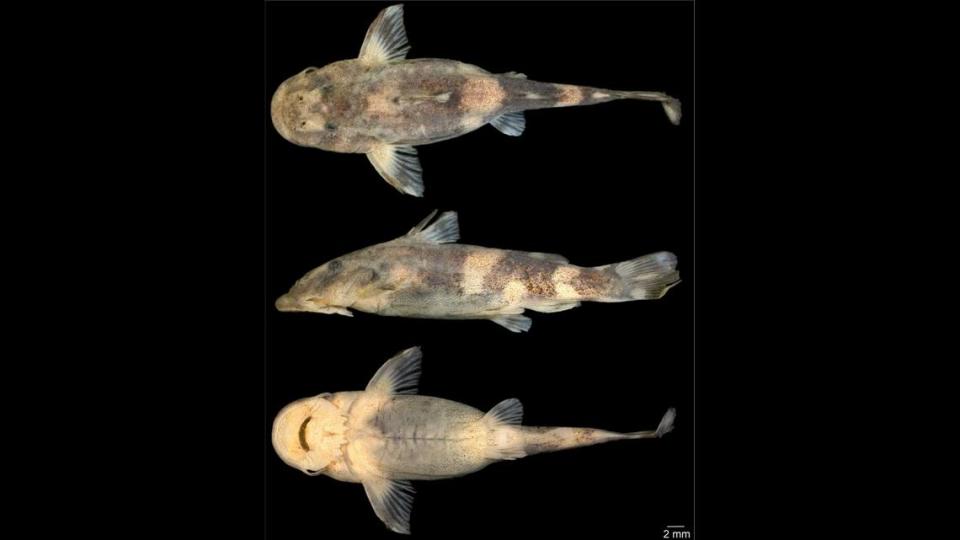Tiny new species is named after ‘Lord of the Rings’ character for good reason. See it
In “The Lord of the Rings” trilogy, the hobbit Frodo Baggins — an unusual, human-like creature with large furry feet — goes on a treacherous journey across Middle Earth.
Though Frodo is just a figment of J.R.R. Tolkien’s imagination, researchers in West Africa say they have identified a species that resembles the hobbit, and they named it accordingly.
Chiloglanis frodobagginsi is a new species of suckermouth catfish found in the upper Niger River, according to a study published July 31 in Ichthyology & Herpetology. Researchers also identified a second new species of suckermouth catfish in Liberia.
The species are the latest of 63 species of suckermouth catfish that live in the flowing waters of West Africa, the study said.
Here’s what to know about the two new species.
Chiloglanis frodobagginsi: A ‘diminutive traveler’
C. frodobagginsi is a small- to medium-sized catfish that can range in size from about 0.75 inches long to 1.5 inches long, researchers said. The fish is medium brown with light brown spots on its back and a yellow-cream colored front side and face.

When the fish were initially discovered, experts thought they were another, similar species, C. micropogon. Further research, however, indicated that the two creatures differ and are actually sister species, the study said.
Compared with their sister species, C. frodobagginsi has bigger eyes, longer whisker appendages and fewer teeth spread among fewer rows, according to researchers.
Experts said the species was named after Frodo Baggins, “another diminutive traveler,” because it is separated from its sister species by about 3,000 miles. Though it’s unclear how the two species became so separated, the species is believed to have endured “an incredible journey for such a small” fish that seemingly doesn’t tend to move from place to place.
Chiloglanis fortuitus: A ‘fortuitous’ discovery
A second new species of suckermouth catfish was also discovered, according to the study.
Experts said they found a single specimen of the Chiloglanis fortuitus species in the St. John River drainage in Liberia. The creature had distinct features that allowed it to be identified as a new species.
The moderate-sized catfish was identified by its extra teeth and long whisker-like appendages, researchers said. The single male specimen that was collected measured about 1.4 inches long.

The creature has darker skin than Chiloglanis frodobagginsi, photos show. Researchers describe Chiloglanis fortuitus as having a dark brown back with patches of a lighter, medium brown color on its back and a creamier color on its front side and face.
Scientists said they named the creature after the “fortuitous” — or lucky chance — collection of just one specimen.
The site where the specimen collected was severely affected by an iron ore mine upstream, the study said. Because only one specimen was available for collection, experts believe the species is a rare discovery, and it is unclear whether more will be available for collection and study.
Tiny leaf-dwelling creature with see-through throat is a new species in Brazil. See it
Vampire crab? New species identified after orange creature found in Thailand swamp
Scaly creature eluded searching scientists for decades — then it was found among rocks

